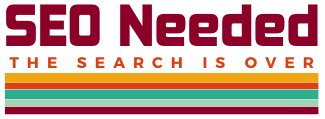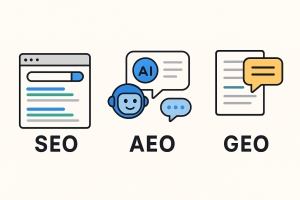While researching online marketing, there are many terms you may come upon that you don’t recognize or understand: Pay Per Click or PPC and of course, SEO (Search Engine Optimization), probably the most tossed around and least understood term. Both of these fall in the realm of SEM or Search Engine Marketing, and we’re going to break these down and give you a clearer idea of what works for your business.
In the most basic sense, Search Engine Marketing is a form of online marketing in which different avenues are employed to increase how high a website ranks on any given search engine. So, want to rank higher on Google? Invest in SEM. Easy, right?

The most popular methods used to achieve results in Search Engine Marketing are:
- Pay-Per-Click (paid ads)
- Search Engine Optimization (ranking your website in organic results)
- Digital Asset Optimization (ranking your images and videos)

As a business owner who’s getting started with online marketing, we’ll focus on PPC and SEO for now. We’ll deal with Digital Asset Optimization, AKA rankingyour YouTube videos for later (psst, which by the way should be educational and not overtly sales-driven).
PPC
Pay-Per-Click is advertising where your ad (which links directly to your website) is displayed at the top and sides of a search result page for a specified keyword or key-phrase. The catch is that you pay every time anyone clicks on your ad (the exact price depends on your industry and ad keyword) and hence the term “Pay Per Click.” Once you stop paying, your ad is removed. For example, if you are a plumber, you might want to show up first when someone Googles “clogged toilet”. With a PPC strategy in place, your hope won’t simply be a pipe dream.
We’ve previously detailed some tips and best practices on how to best achieve success with PPC. Needless to say that just like the Tower of Pisa, a good foundation makes a world of difference. By researching high-search, low-competition keywords paired with a strong demographic profile you will ensure that your business pops up at the top of search engines without breaking the bank. PPC can get frustrating and expensive if not done right, lucky for you, we know someone who’s really good at it. And the best part, once the research and set up phase is over, which is typically under 2 weeks, you can begin to rank as the #1 result immediately.
SEO
SEO is where we do work on your site and and off your site to rank your website organically on the search engine results page for a keyword or key-phrase.

Organic in this sense just means that it’s not paid, like PPC. In other words, you do not pay when someone clicks on your website’s link on a search engine. But the catch, you know there’s always a catch, is that unlike PPC, it can take weeks or months to rank for your keyword.
This is (not really, but sort of) how SEO works:
- SEO Needed: Oh hey, this website is totally more relevant and better for this keyword than all these other loser sites you got here, rank it higher.
- Google/Yahoo/Bing: Oh yeah? Prove it!
- SEO Needed: *proves it with onsite and offsite optimization*
- Google/Yahoo/Bing:
Just like PPC, there’s a crucial research and set up phase where we determine the path of least resistance to give you the results that will yield you the most business. Online marketing companies that genuinely know how to utilize SEO will complete research to find high-search, low-competition keywords that will inevitably lead to your website appearing higher on search engines and also cater to the audience you are trying to reach. There’s many tools in our box: web results, map results and news results. When used effectively, you win!
Conclusion
So which is better? PPC or SEO? PPC has great short-term gains but once you stop paying for the ads, you no longer exist on the search results page. SEO has the benefit of not having to pay per click plus the effects of a proper SEO strategy can last for years but can take much longer to see any results.

The reality is that your budget will determine the best route. 9 out of 10 times, the quick results of PPC will allow you to quickly reinvest in the longer-term SEO strategy. However, both strategies should be employed at all times. It’s not a hierarchy. One isn’t an upgrade over the other. We use both to fill in gaps and thus put you in front of the most customers as possible.
Let us know what your goals are and we’ll come up with the right plan for you.












